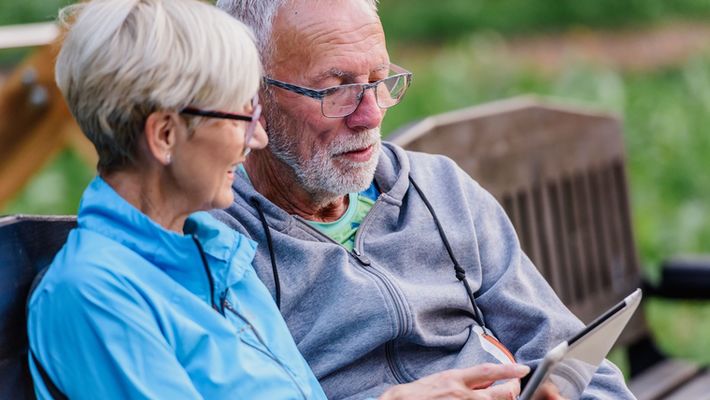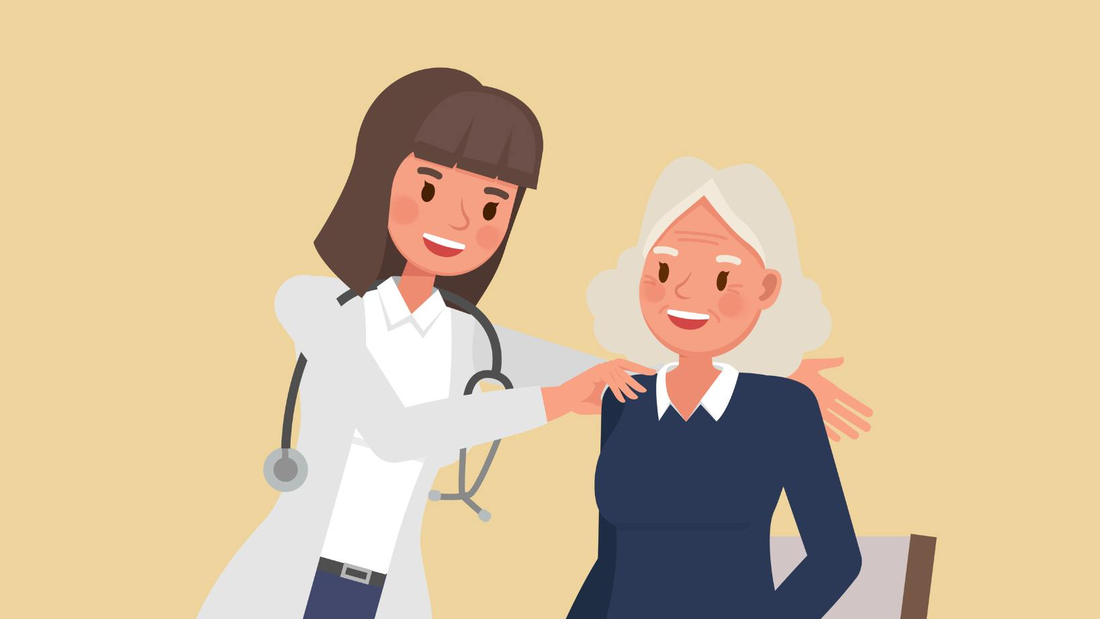
Remote Patient Monitoring (RPM) has revolutionized healthcare by enabling providers to track patients' health data outside traditional clinical settings.
However, a recent report by the Office of Inspector General (OIG) on RPM in Medicare highlights a significant challenge: many patients are not receiving adequate education on their RPM devices.
This educational gap can lead to patient confusion, improper device usage, and ultimately, suboptimal health outcomes. To address this, incorporating a diverse array of healthcare video formats into patient education strategies offers a dynamic and effective solution.
The OIG report's findings are concerning:
Consider Sarah, a 70-year-old patient managing hypertension. Without proper instruction on her RPM device, she misreads her blood pressure readings, leading to unnecessary anxiety and frequent, avoidable hospital visits.
Video education emerges as a powerful tool to bridge this gap, offering flexibility in format, length, and content to cater to diverse patient needs. By utilizing various video styles—ranging from quick microlearning snippets to comprehensive educational series—healthcare providers can deliver clear, engaging, and accessible information.
Instructional videos are foundational for RPM education, providing step-by-step guidance on device setup, usage, and maintenance. Typically ranging from 3 to 7 minutes, these videos are long enough to cover essential details without overwhelming the viewer.
To capture and retain patients' attention, employing cinematic techniques is crucial. Live demonstrations featuring real people using the devices can enhance relatability. Close-up shots, clear visuals, and straightforward narration help in breaking down complex procedures. For example, using split-screen effects can simultaneously show the device's interface and the patient's actions.

Animated videos can further simplify complex concepts. Animated graphics illustrating how a device interacts with the body can demystify technology, making it less intimidating for patients. Incorporating interactive elements, such as on-screen prompts or pauses encouraging patients to practice a step before proceeding, can enhance engagement and retention.
Producing high-quality instructional videos typically requires a small to medium-sized crew, including a director, camera operator, sound technician, and possibly an animator or motion graphics designer. At Goodsides, we specialize in assembling agile production teams that deliver professional results efficiently.
These videos should be distributed across multiple platforms for maximum accessibility. Embedding them within the RPM platform ensures they are available at the point of need. Additionally, hosting on patient portals, YouTube (with privacy settings as needed), or providing downloadable links can accommodate patients with varying levels of tech-savviness.
For patients with limited attention spans or those who prefer concise information, microlearning snippets offer focused content in 1 to 2-minute videos. These bite-sized lessons address specific topics, such as troubleshooting common issues or providing quick health tips.
To make the most of the brief duration, start with a strong hook—a compelling question or a surprising fact—to immediately engage the viewer. Visual aids like bold graphics, text overlays, and quick transitions keep the content dynamic. Background music or sound effects can enhance the viewing experience without distracting from the message.
Given their brevity, these videos can be produced with a minimal crew, often just a videographer and an editor. Goodsides excels in creating impactful micro-content efficiently, ensuring rapid turnaround times.
Microlearning snippets are ideal for distribution via mobile apps, SMS links, or social media platforms, allowing patients to access information on-the-go. Implementing a "Tip of the Day" series can keep patients engaged and continuously learning.
When in-depth education is required, such as for chronic disease management, long-form videos ranging from 10 to 15 minutes are appropriate. These comprehensive modules delve into topics like understanding one's condition, lifestyle modifications, and medication management.
To maintain engagement over a longer duration, storytelling becomes key. Incorporate patient narratives, expert interviews, and real-life scenarios to make the content relatable. High-quality production values—crisp visuals, professional lighting, and clear sound—are essential to keep viewers immersed.
Producing these videos involves a larger crew, potentially including multiple camera operators, sound technicians, lighting experts, and set designers. Goodsides brings extensive experience in managing such productions, ensuring that the complexity does not compromise efficiency.
These educational series can be hosted on the RPM platform or a dedicated learning portal, where patients can progress through the modules at their own pace. Offering accompanying materials, like downloadable guides or quizzes, can reinforce learning.
Sharing patient testimonials and stories adds a human touch to RPM education. Videos of 3 to 5 minutes featuring patients who have successfully managed their health with RPM can inspire and motivate others.
Authenticity is paramount in these videos. Filming in patients' homes or familiar environments, using natural lighting, and encouraging candid conversations help create a genuine connection. Including B-roll footage of patients engaging in daily activities adds depth.
A small crew is sufficient—a director to guide the conversation, a camera operator, and a sound technician. Goodsides is adept at creating a comfortable atmosphere that encourages patients to share their stories openly.
These videos can be shared on the RPM platform, social media channels, within community groups, or turned into serialized videos embedded into emails. Ensuring compliance with privacy regulations and obtaining proper consent is crucial.
To reach a diverse patient population, videos must be culturally sensitive and available in multiple languages. This might involve translating scripts, using voice-over artists fluent in the target language, or reshooting scenes with actors from different backgrounds.
Cinematic considerations include being mindful of cultural norms in visuals and language. For example, gestures, attire, and settings should be appropriate for the target audience. Goodsides' diverse talent pool and cultural expertise enable us to produce content that resonates authentically with various demographics.
Distributing these adapted videos through community channels, local clinics, or organizations can enhance their accessibility and impact.

Regardless of the video format, certain cinematic techniques can enhance engagement:
Goodsides tailors the crew size to the project's scope, optimizing resources without compromising quality.
Effective distribution ensures that the right content reaches the right audience:
Goodsides offers expertise in developing distribution strategies that maximize reach and engagement.
By integrating these diverse video formats, healthcare providers can enhance the RPM experience beyond basic instruction.
Creating content tailored to individual patients enhances relevance:
Videos can be designed to encourage positive health behaviors:
Including caregivers amplifies support:
Strengthening connections through video:
At Goodsides, we bring unparalleled value and expertise to healthcare video production:
For example, when working with a healthcare provider serving a predominantly Hispanic community, Goodsides produced a series of instructional videos in Spanish. By featuring local actors and culturally relevant scenarios, the videos achieved high engagement rates and significantly improved patient adherence to RPM protocols.
The OIG report underscores the essential role of patient education in the success of RPM programs. By leveraging a diverse array of video formats and applying cinematic techniques, healthcare providers can create compelling educational content that bridges the current gap.
Video is not just an educational tool; it's a versatile medium that can adapt to various needs, preferences, and cultures. By harnessing its full potential, we can transform RPM into a truly patient-centric model of care—where patients are informed, empowered, and actively involved in their health journey.
At Goodsides, we are committed to revolutionizing healthcare communication through the power of video. Our services include:
Partner with Goodsides to unlock the full potential of video in your RPM program. Together, we can empower patients, enhance engagement, and achieve better health outcomes through innovative and impactful video education.
Let's work together to revolutionize RPM education. By integrating diverse and dynamic video content, we can empower patients, enhance engagement, and improve health outcomes through the power of visual storytelling.
The original version of this page was published at: https://www.government.media/post/video-bridging-the-rpm-education-gap
With Goodsides videos, providers become trusted resources and pillars of their communities by empowering individuals with the knowledge they need to make informed health decisions and live healthie... Read more
Healthcare success stories transcend mere heartwarming anecdotes; they possess a tangible, transformative power supported by compelling evidence.These narratives of triumph resonate ...read more
The healthcare industry is evolving at an unprecedented pace. New technologies, evolving patient expectations, and a competitive talent market demand innovative communication strategies. ...read more
Answer these 5 quick questions to discover your ACC's video marketing readiness and get tailored tips for success:1. How frequently does your ACC currently use video in its marketing ...read more
In the aftermath of a devastating stroke, a patient's (let's call her Sarah) world fell silent. But through unwavering support and innovative therapy, her journey to recovery ...read more